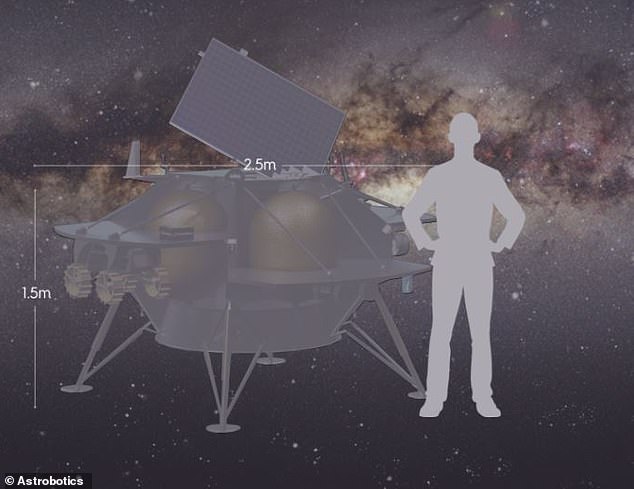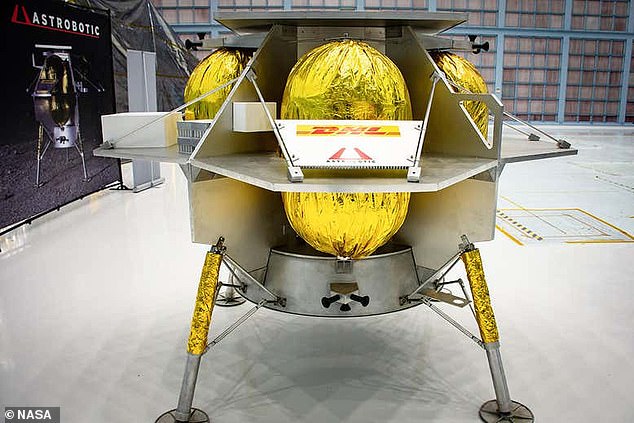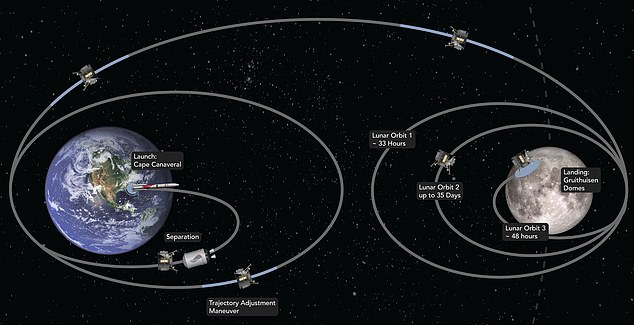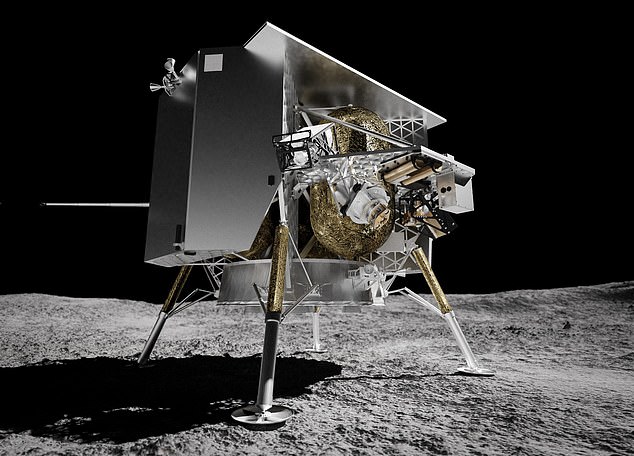America is going back to the moon! NASA’s Christmas Eve launch will be first time US craft has landed on the lunar surface in more than 50 years
>
America is scheduled to land a rover on the moon next January, marking the first moon landing since the last Apollo mission more than 50 years ago.
Humans won’t make the trip, but a six-foot-tall lander called Peregrine is scheduled to launch on Christmas Eve at 1:50 a.m. ET and will arrive on January 25.
The rover was designed by Pittsburgh-based Astrobotic, a space robotics company, which NASA commissioned in 2019 to carry out the mission.
Peregrine will launch from Florida carrying 21 lunar payloads as experiments, landing in an area of ancient basalt lava flows.
The United States’ last adventure on the moon was during the Apollo 17 mission in December 1972, which saw four astronauts trek across the barren landscape.
The six-foot-tall Peregrine lander is scheduled to launch on Christmas Eve at 1:50 a.m. ET, arriving on January 25.
“It is incredible to realize that we are only a short time away from the Peregrine spacecraft beginning its journey to the Moon,” said John Thornton, CEO of Astrobotic.
“After years of dedication and hard work, we are very close to achieving our goal.
“We invite you to follow Peregrine’s journey, with seven countries represented on board, to the Moon and the first successful landing attempts of an American spacecraft since Apollo.”
Peregrine will be launched on the inaugural flight of the new Vulcan Centaur rocket, developed by aerospace manufacturer United Launch Alliance.
Thornton said the probe will take “a few days” to reach lunar orbit but will have to wait until January 25 before attempting to land so that the lighting conditions at the target site are suitable.
The landing will be carried out autonomously, without human intervention, but will be monitored from the company’s control center.

The probe is the size of an ordinary man, and is capable of carrying up to 265 pounds of payload

The vehicle was designed by Pittsburgh-based Astrobotics, a space robotics company that NASA commissioned in 2019 to carry out the mission.
Astrobiotic’s lunar lander stands on four shock-absorbing legs and is attached to the launch vehicle via a standard clamp.
“The Peregrine Lander precisely and safely delivers payloads to lunar orbit and the lunar surface on every mission,” the company’s official website reads.
“Loads can be mounted above or below roofs and remain attached or spread out depending on their needs.”
The Peregrine can carry up to 265 pounds of payload released from the underside of the deck.
Astrobotic delivered its probe to Florida last month in preparation for launch.
“As we know, space is a challenging environment,” said Sharad Bhaskaran, Peregrine Mission One mission manager at Astrobotic. “We are ready for launch after successfully completing a set of industry-standard acceptance tests, so Peregrine has the best chance for mission success.”

The probe will take “a few days” to reach lunar orbit but will have to wait until January 25 before attempting to land so that the lighting conditions at the target location are suitable.

Astrobotic delivered its probe to Florida last month in preparation for launch. This will be the first American-owned vehicle to land on the moon in more than 50 years
‘Al Shaheen and the team are ready.
“After launch, we will separate from Vulcan Centaur and establish power and communications with the spacecraft to direct it to the Moon.
“Next, we will attempt a historic autonomous landing on the moon.”
While Peregrine will be the first US-owned probe to land on the moon since 1972, NASA is scheduled to put American boots on the moon in 2025.
This feat is part of Artemis’ quest, which includes three phases.
The first launch took place on November 16, with the Orion spacecraft sent atop a Space Launch System (SLS) rocket.
Orion orbited the Moon and fell into the Pacific Ocean near California on December 11.
Artemis II will be the mission’s first crewed flight and will also orbit the Moon, with the flight scheduled to take place no later than November 2024.
(Tags for translation)dailymail
